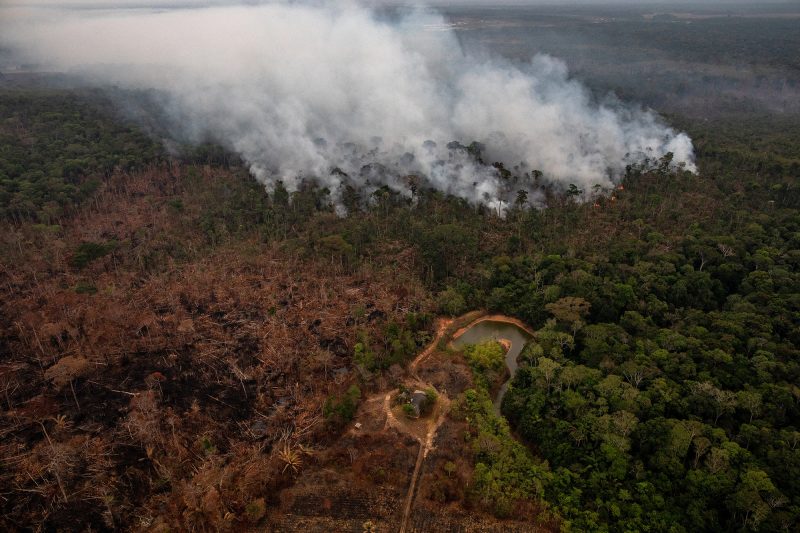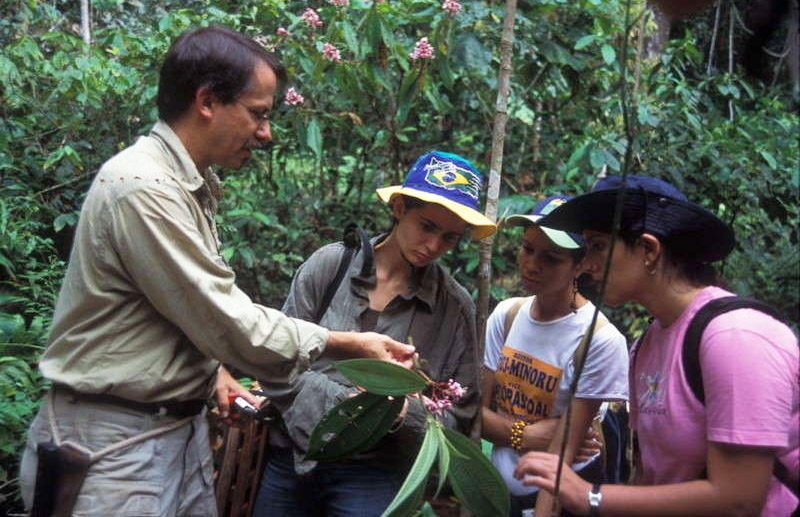Project Rondônia: On the Ground in Brazil’s Amazon Rain Forest
Posted in Environment on September 17, 2019 by Douglas Daly
Douglas Daly, Ph.D., is the B.A. Krukoff Curator of Amazonian Botany and the Director of the Institute of Systematic Botany at The New York Botanical Garden.
“Destruction [of forests] represents an attack on humanity, an affront to the sources of life, and an assured means of destroying future generations.”
—Roberto Burle Marx, “Garden and Ecology,” 1969

The Amazon is the world’s largest tropical forest, spanning nine South American countries and housing 10 percent of the world’s living plant and animal species. Its trees absorb about 25 percent of carbon emissions taken in collectively by all forests on Earth, replacing harmful CO2 with the oxygen we breathe. Recent reports indicate the number of fires blazing in the Amazon in late August 2019 is the highest on record, representing an 83 percent increase over the number of fires at the same time last year.
The devastating loss of forest to these fires is displacing people and animals, negatively affecting air quality in the region, changing rain patterns on a continental scale, and reducing the forest’s capacity to clean air for the planet. Meanwhile, the Amazon basin remains severely understudied and poorly understood for its potential value to the health of the planet. It is stunning to consider the fact that on average, a new species of plant from Brazil is published every two days, and thousands more—especially in Amazônia—remain to be discovered. These plants, and their potential benefits, may be lost forever due to the current crisis of deforestation in Brazil.
For most of the past decade, I have focused much of my efforts on a research and training project in the southwestern Amazonian state of Rondônia, which is one of the most deforested areas in the Amazon and is currently suffering the most fires and greatest increase in deforestation. Rondônia is especially important because it is one of the most biodiverse areas of the Amazon, with a wide range of habitat types and topography, but its flora is among the least documented. As thousands of fires burn in Rondônia, the work of myself and my team of Brazilian collaborators is literally under fire. We are extremely anxious to expedite this vital project to train those who manage and monitor the forests and document the native flora of Rondônia before it is permanently compromised.

My research project in Rondônia is a tremendously gratifying partnership with the Federal University of Rondônia and state and national government agencies. We are investing in training, institution-building, scientific exchange, and of course, botanical exploration and collecting throughout the state. My team and I have been documenting the flora of the state and are poised to publish the first substantial technical and popular accounts of Rondônia’s plant diversity. Given the urgency of the current crisis, we are convening in Rondônia—the eye of the firestorm—later this month to finalize a training project and collect and document plant specimens to complete field research on a set of key species. Future applications of the completed work include efforts to combat deforestation and its dire global impact.
The Rondônia project incorporates my ongoing efforts in training professional woodsmen for managed forests. We are excited by the potential of a recent outgrowth of this work: an ambitious, Amazon Basin-wide project to work with representatives of forest-dwelling communities near federal protected areas, providing training and resources so they can function as partners in documenting flora and monitoring change in protected forests. Across Amazonia, forest communities are eager—and able—to be part of these efforts.
Amazônia has been designated by NYBG’s Center for Conservation Strategy as an Area of Botanical Concern. As in other countries, our scientists partner with local Brazilian botanists and forestry professionals and mentor young colleagues in Brazil to find sustainable solutions and promote community partnerships that can preserve the Amazon and help respond to the current crisis of fire and deforestation.
During Climate Week NYC at NYBG, Dr. Daly will be on the ground with local collaborators in Rondônia, the eye of the current firestorm in the Amazon Rain Forest. Follow along on Facebook, Instagram, and Twitter for updates from the field.

